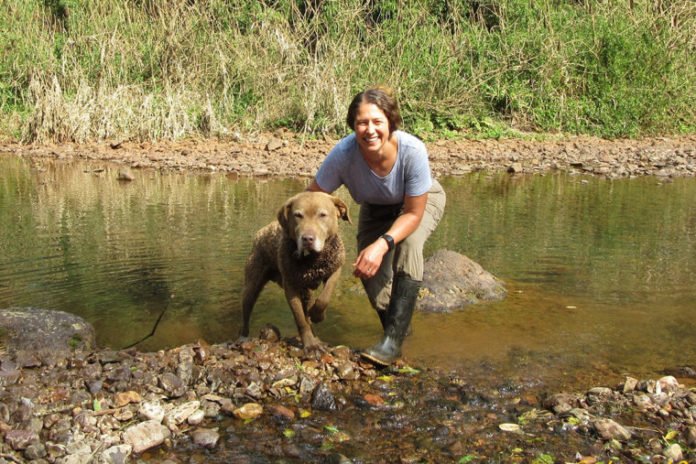Why do dogs that are trained to locate poop sometimes find the wrong kind of poop?
A new study by the Washington University in St. Louis found the answer to this. Scientists suggest that there are three viable, alternative explanations beyond errors in handler or dog training that can explain the collection of non-target scats with detection dogs in some ecosystems.
Detection dogs are trained to use scent to locate specific kinds of scat. They’re useful partners in conservation projects as an alternative to camera photo traps or other more invasive means of identifying which individual animals are present in an area.
And keeping in mind that finding the wrong sort of poop doesn’t eventually mess up explore results — scientists who utilize scat to track animals usually utilize DNA tests to affirm the personality of the target and non-target evacuators — gathering and testing false positives costs an undertaking time and assets.
Karen DeMatteo, a biologist in Arts & Sciences at Washington University in St. Louis, said, “To date, when non-target samples are found in detection dog studies, it is assumed it may be due to errors in detection dog or handler training; however, our study determined that this is not always the case. Instead, the complexity of ecosystems where a study is conducted can affect the perceived accuracy of detection dog studies because the natural behaviors of non-target species, like coyotes in our study, can alter the genetic profile of target scat, like that from a puma.”
During the study, scientists used scat-detection dogs to identify the routes traveled by endangered pumas and other reclusive carnivores along a biologically important corridor in Argentina.
Discovery dogs are great at deciding the nearness of particular animals since they can discover droppings covered up in the grass, droppings that have been rained on and broken down into the mud — or even droppings that have been eaten and afterward reused.
DeMatteo said, “Humans have a natural aversion to coprophagy, which is reflected in the visual horror on an owner’s face when they see their dog gobble down their own scat or the scat of another dog or cat. Once this shock subsides, the owner typically worries that the scat will cause health problems or there is something psychologically wrong with their four-legged friend.”
“While the reasons underlying coprophagy in domestic dogs are still fuzzy, it is known in wild canids that coprophagy is natural and is often associated with territoriality or nutritional benefits. So while the finding that coyotes will consume puma scat is novel and has various ecological implications, coprophagy occurs naturally under a variety of circumstances.”
The propensity of one creature to eat another’s scat is one of three practices that may adjust the kind of scat, or the condition of the scat, that a detection dog may experience and consequently influence the apparent exactness of the method.
The researchers found that each of the proposed behaviors alters the genetic profile of the scat in question, and all were confirmed to play a role in the detection dog indicating non-target scats.
DeMatteo said, “The pool of conservation-trained detection dogs is constantly growing in number, as are the types of target species and the areas where they are being used. One of the continuing questions surrounding their use for these types of projects is how to maintain a high-quality standard for training detection dogs and their handlers.”
“In reality, the dog is easier to train than the handler, with the latter having a higher chance of introducing error. Even with these variables, these results are extendable to other dog-handler teams with less experience, as long as consistency is used.”
The study also demonstrates that there are alternative explanations for why dogs sometimes collect non-target samples. It also shines a light on behaviors that humans may not understand — but that could play a role in ecosystem functioning.
DeMatteo said, “Genetic testing can eliminate these samples and maintain accuracy in the [detection dog-assisted] studies. However, this non-target interaction with target scat potentially has important implications for other ecological questions, including parasite/disease transmission, zoonotic diseases, and general health of wild populations.”
The study is published in the journal Scientific Reports.
